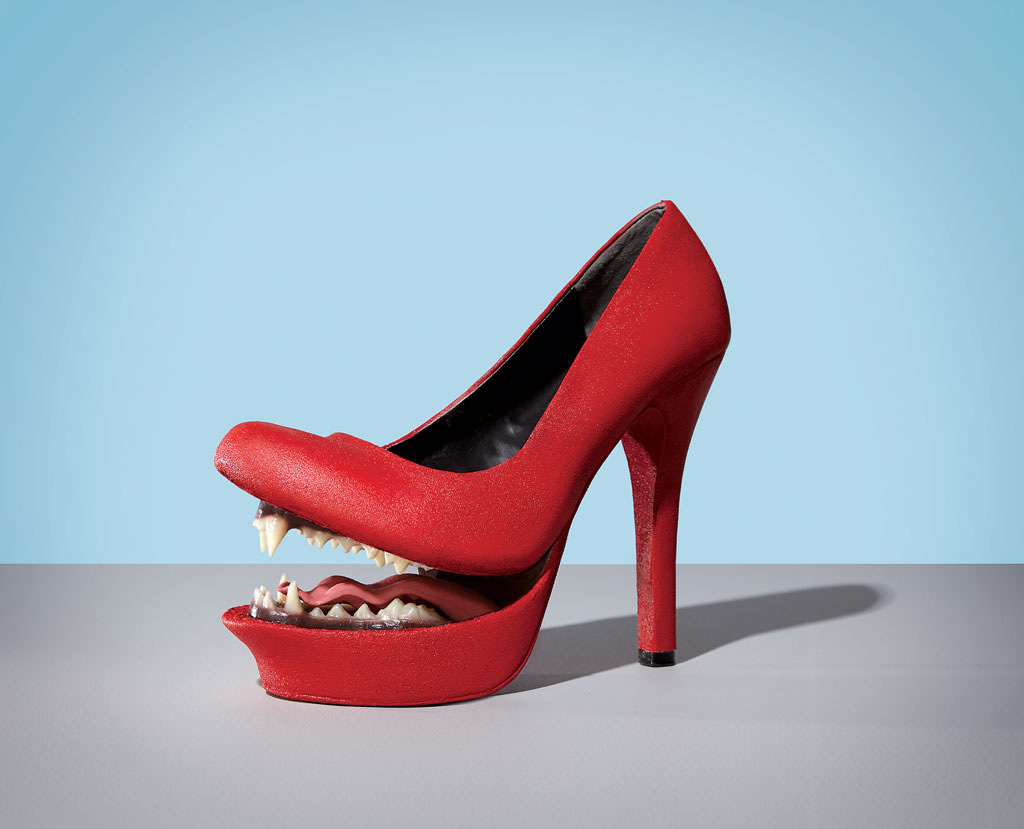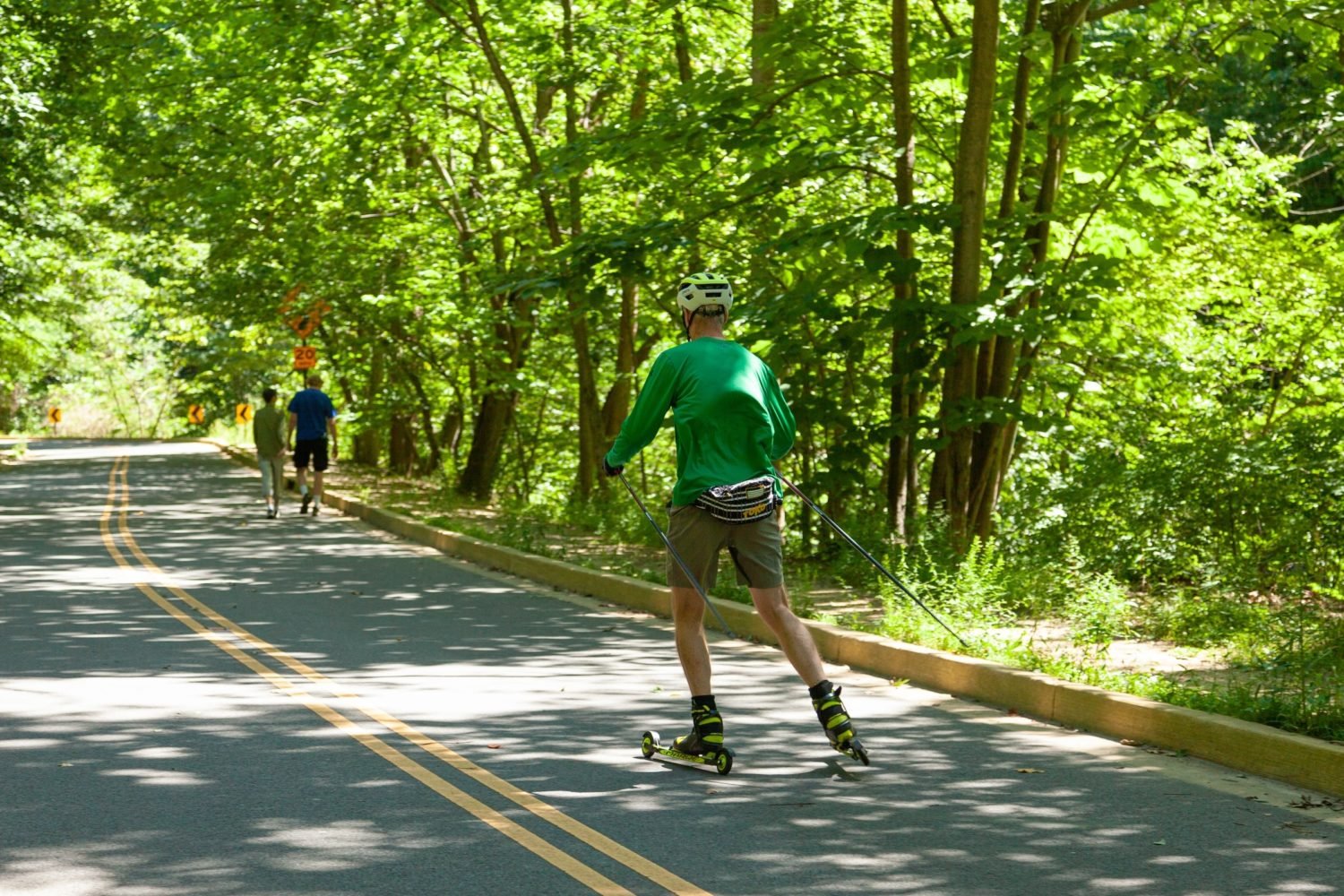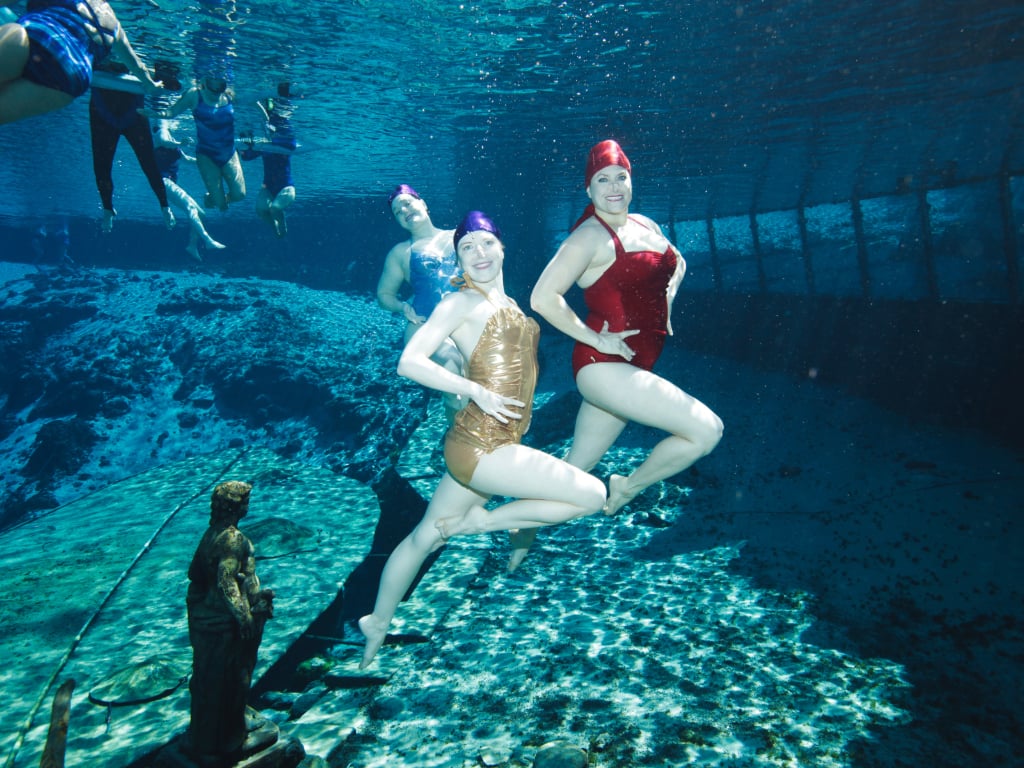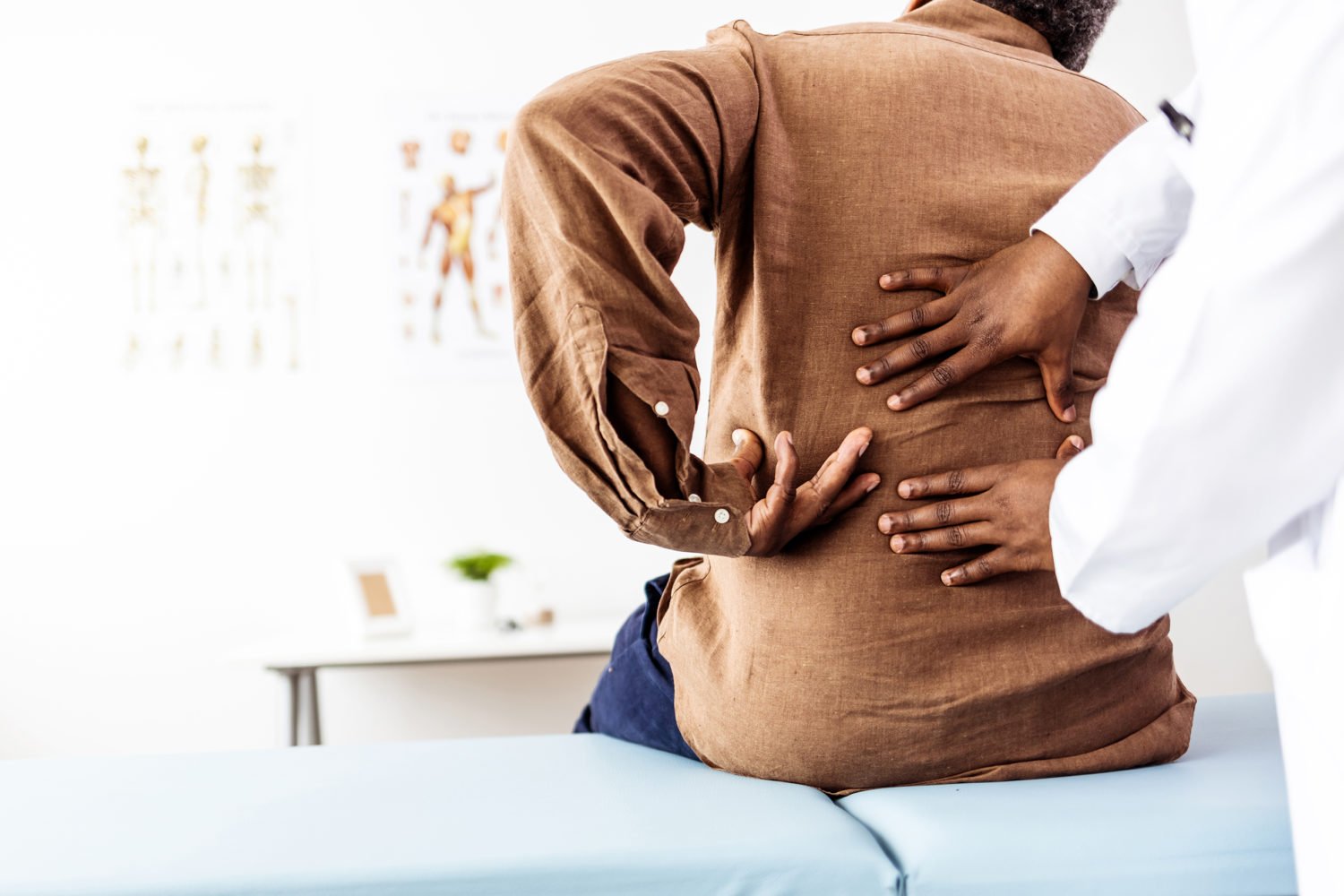Consider the Washington foot. A fitness-obsessed region uses it to jog, to pedal at the latest stationary-bike gym, or simply to work upright at a standing desk. A booming region uses it to stroll to nearby shops and restaurants and—especially during one of Metro’s meltdowns—not-so-nearby offices.
Yet according to people who spend time tending to this unhappy appendage, Washingtonians aren’t so smart about what they wear on it as they pound the pavement. “The intersection between activity and shoes is one of the biggest places people go wrong,” says Michael Stempel, chief of podiatry at the GW Medical Faculty Associates.
Stempel and his colleagues have some advice to lessen mistreatment of our feet—and to avert the pain that can follow. Here are five things to quit.
1. Trading Heels for Ballerina Flats
After being inundated with information about how bad stilettos are for your feet, it makes sense that you’ve resorted to their opposite: a flat, paper-thin shoe you can wear during your commute, then store in your bag or toss under a desk. But those ballet flats might be doing more damage than you realize. The barely-there soles offer little shock absorption, hence causing heel pain from the repetitive stress, says Stempel.
And those flats that you bend in half to fit in your clutch? Their flexibility means they offer almost no support. The foot then moves more and the tendons have to work harder to stabilize it, leading to tendinitis, says Eleanor Wilson, a local podiatrist with Kaiser Permanente.
In a podiatrist’s dream world, everyone would wear athletic sneakers with a work suit—which is probably not going to happen, largely because this dream world is a fashionista’s nightmare. When you choose a supportive, comfortable shoe, according to Stempel, you should hold the heel and toe, then flex the shoe to see how much it bends or twists. (The answer should be very little.)
Lee Firestone, a podiatrist with Foot & Ankle Specialists of the Mid-Atlantic, in Chevy Chase and DC, recommends seeking rubber soles for impact protection, opting for breathable materials such as canvas, and picking a square toe box rather than a pointy shape, which squeezes the toes and can lead to bunions.
2. Wearing the Wrong Kind of Heels
Not all heels are created equal. The real foot wreckers are four- and five-inch stilettos, says Wilson. As a professional herself, she prefers wearing heels but sticks to ones that are an inch and a half high, max. Wilson also opts for stacked, block, or wedge heels instead of spindly ones: “You always want a block or wedge heel—it distributes weight more and actually stabilizes the foot more. The spiky heel puts too much pressure on the toes.” Firestone notes that shoes with multiple straps also provide more support.
3. Buying Patent or Synthetic Leather
While patent leather may look dressier and synthetic leather may be easier on the wallet, neither is particularly flexible. “It’s not a good idea to wear a stiff leather—your feet can swell during the day,” says Wilson. “If you have a softer material, it’s more likely to adapt to the swelling.”
When swollen feet are crammed into too-small shoes, bunions can form. For the same reason, Firestone suggests shoe-shopping at the end of the day, when feet are at their largest. To ensure a good fit, he removes the insole and holds it against the bottom of his foot to see exactly where his heel and toes align.
4. Thinking Your Feet Are the Same Size they were a Decade Ago
Over the years, even adult feet continue to grow. For some people—particularly pregnant women—the arches flatten, causing feet to lengthen. Even if you think you’ve been a size 8 shoe since college, that doesn’t necessarily mean you should wear that size today.
One way to tell if your arches have flattened is to look at the print your foot makes when wet. If you can see the entire base of the foot, Firestone says, that means you have flat feet. Alternatively, you can test the flatness of your arches by bending over and seeing if you can tuck your fingers into the space between the center of your foot and the ground. If you have flat feet, you may require better shoes—possibly larger than your former size—that offer more support and stability, as well as arch supports, which can be custom-made to fit you.
5. Living a Weekend- Warrior Lifestyle
A mostly sedentary work life isn’t unique to Washington, but when you’re seated 40-plus hours all week and spend Saturdays training for marathons, foot damage can result.
“In our athletic population, we’re seeing a lot of sports injuries from overuse,” says Firestone. “I think we have a lot of people who sit at desks all day and then get out there and run six miles after work.” Stempel describes this as an attempt to “make up for inactivity with super-activity.”
One solution is to exercise more consistently rather than saving a week’s worth of workouts for Saturday and Sunday. Additionally, Firestone—a marathon runner himself—recommends cross-training by mixing in yoga or Pilates to build core strength and to avoid strain from one repeated form of exercise.
This article appears in our October 2016 issue of Washingtonian.













